Info
Subfamily: Pooideae
Genus etymology: Phalaris = "coot" [Greek] refering to a European species whose fruit is enclosed in white scales, resembling the white sheild of a coot (Fulica atra Linneaus 1758)
Species etymology:
Photosynthetic type: C3 (cool season)
Nativity: questionable - intentional
First recorded in Hawaiʻi: 1958
Map
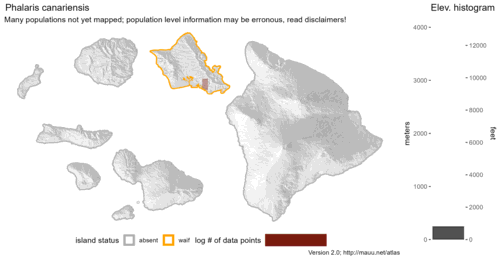
Inflorescence
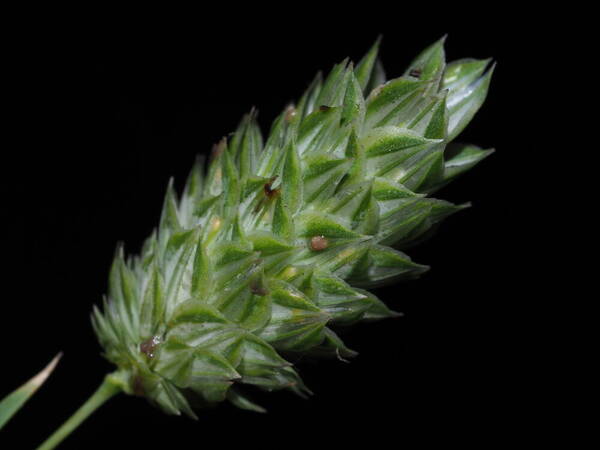
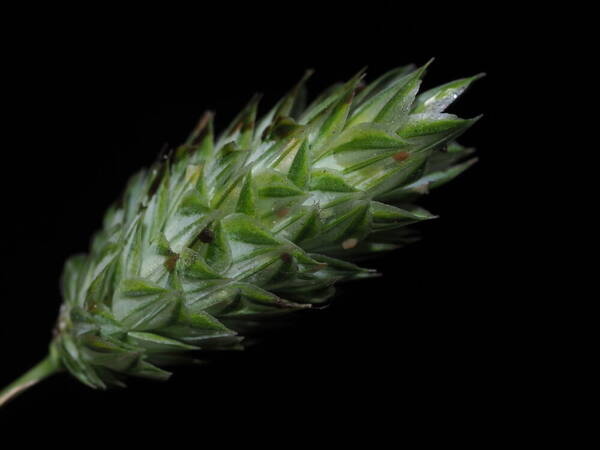
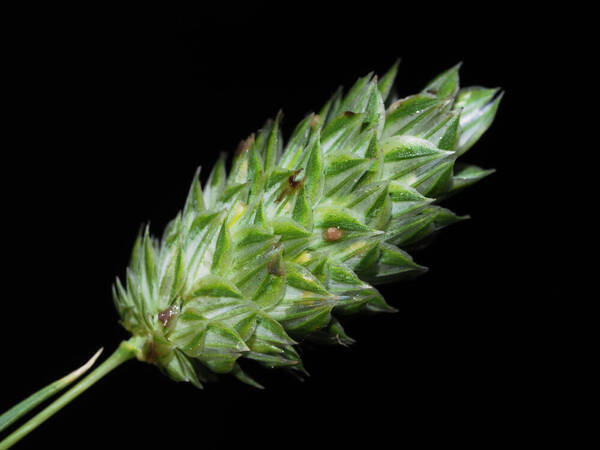
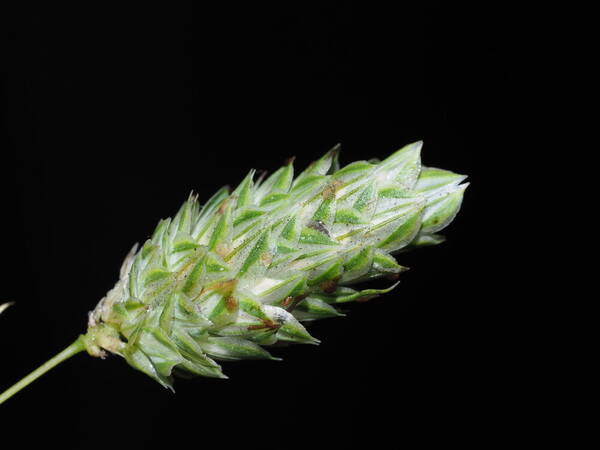
Description
Plants annual. Culms 30-100 cm. Ligules 3-6 mm, rounded to obtuse, lacerate; blades 3-25 cm long, 2-10 mm wide. Panicles 1.5-5 cm long, 1.5-2 cm wide, ovoid to oblong-ovoid, continuous, not lobed, truncate at the base; branches not evident, spikelets borne singly, not clustered. Spikelets homogamous, with 3 florets, terminal floret bisexual; disarticulation above the glumes, beneath the sterile florets. Glumes 7-10 mm long, 2-2.5 mm wide, smooth, mostly glabrous, sometimes sparsely pilose between the veins, keels winged, wings to 0.6 mm, widening distally, lateral veins inconspicuous, smooth, apices rounded to acute, sometimes mucronate; sterile florets 2, equal or subequal, 2-4.5 mm, 1/3 or more the length of the bisexual florets, lanceolate, sparsely hairy, acute; bisexual florets 4.5-6.8 mm, ovate, densely hairy, shiny, stramineous to gray-brown; anthers 2-4 mm. 2n = 12.
(Description source: Barkworth, M.E., Capels, K.M. & Long, S. (eds.) 1993. Flora of North America, north of Mexico. Volume 24. Magnoliophyta: Commelinidae (in part): Poaceae, Part 1. Oxford University Press, New York. 911 pp. http://floranorthamerica.org/Phalaris_canariensis )